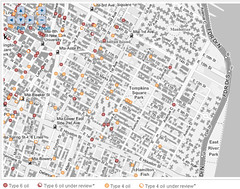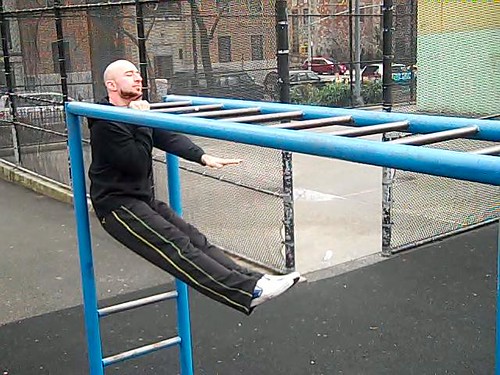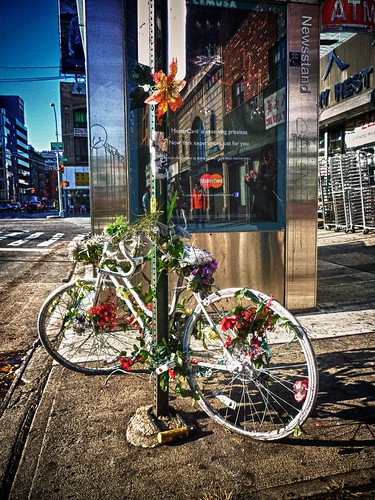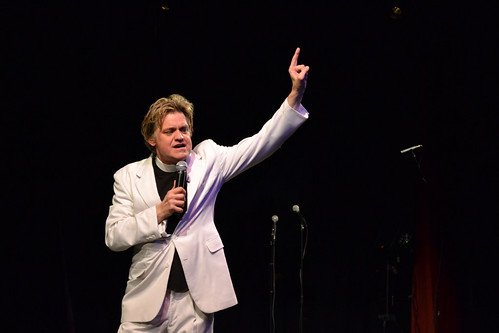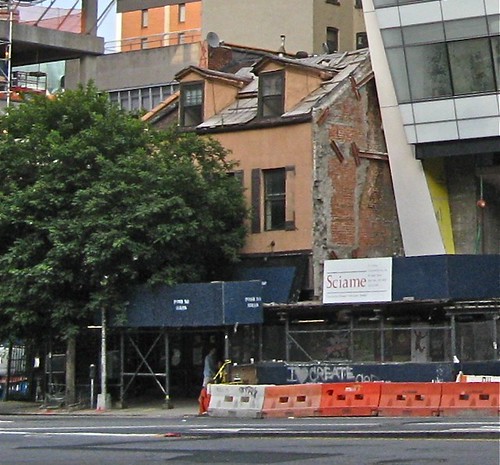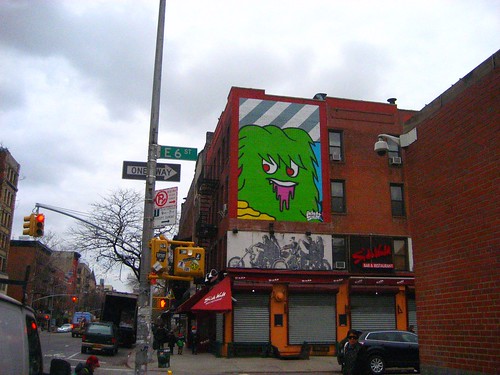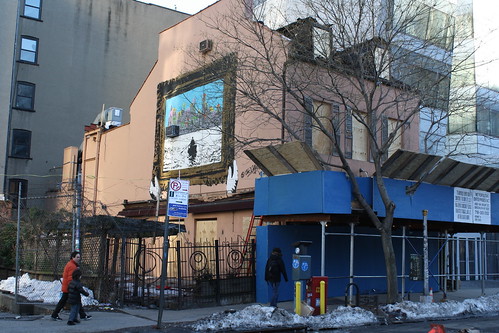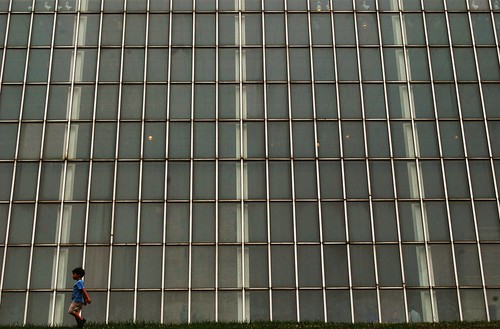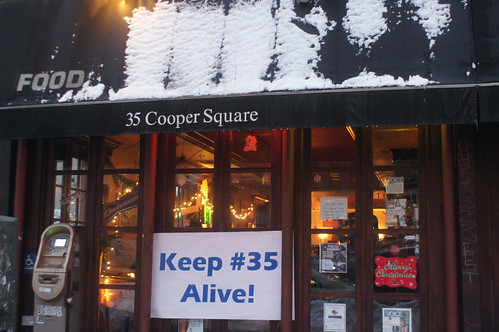 Tim Schreier
Tim SchreierWould-be messages from the East Village, in 140 characters or less.
Sunday Morning on Avenue C
The joy of it the sting of it the bells of it the glare of it
the birds of it the eyes of it the prayers of it the drugs of
it the it of it
Sidewalk Encounter
The rat crossed his path with such nonchalance the damn
thing might as well have been wearing shades &
smoking a bidi
The British Lawyer
…Surveyed our sunken roofs, loose bricks, black
spaghetti of dangling phone wires, & declared, “In
London, this would all be illegal!”
Personal Trainer
I met it at downtown’s trendiest gym
could never ascertain: her or him?
never saw it change or shower or swim…
but now I’m toned and trim
P.S. 122
Should artistes shovel snow like normal people? Please.
Pratfalls are aesthetic (Tati, etc.), and black ice is a
frozen film noir…
Middle Age (Paging Lou Reed)
O it’s such a perfect day (though I barely slept) I’m so
glad I spent it with you (whoever you are) where is the
damn zoo, anyway?
Disappointment
At the Immaculate Conception Church, the priest offers
bread, but no wine. The blood of Christ is available only
on Sundays
Beautiful Girl at the Nail Salon
She worked in TV and sounded like TV so he pretended
she was TV and returned his gaze to the mute black hair
of the Asian woman at his feet
Tech-Tock
Even when you refuse to believe them, memes can cling
like cellophane: This bookstore is a dying thing,
empty an hour before closing
Lunch Date
The Loneliest Man in the East Village took the Second
Loneliest Man to lunch. They ate mostly in the silence of
silverware. Both agreed
that they were failures, that their erotic prospects were
risible, that their Linked-In profiles were musty tombs,
and that they rarely met
anyone not connected to the service industry except in
movies, books, and dreams
Discuss
The fact people can be left to die on the sidewalk has
always made the East Village viscerally exciting to
young Europeans




